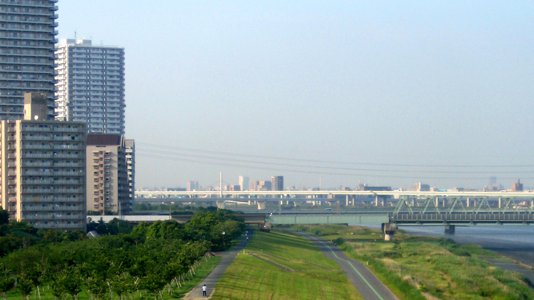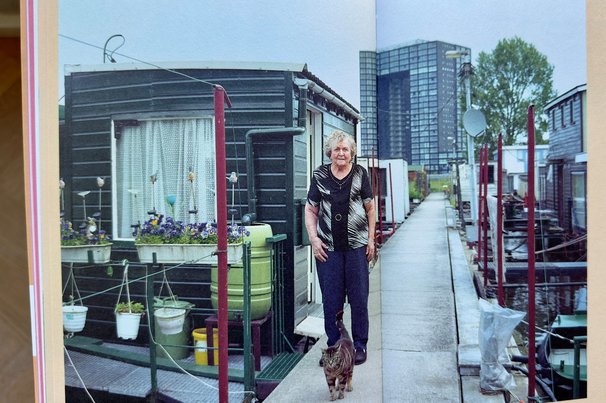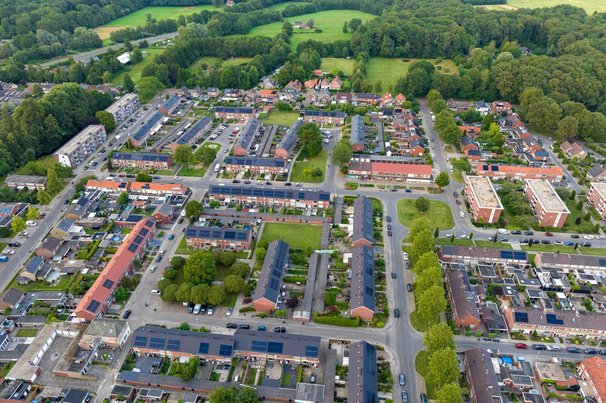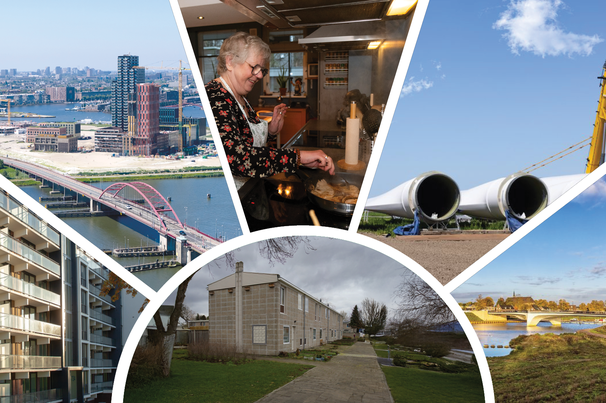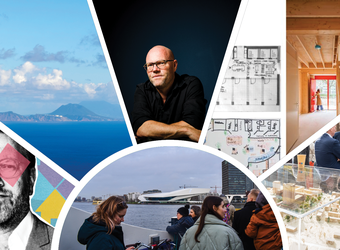Nieuws The Netherlands is world-renowned for keeping its waters under control. Our country and Dutch companies are leaders when it comes to water management expertise and technology. With the aid of the 2007 planning policy Ruimte voor de Rivier (Room for the River), we have become accustomed to the new way of dealing with water. Solace should no longer be sought in increasing the height of the dykes, but rather in giving water room to manoeuvre, even in inhabited areas. Outside of the Netherlands, this approach is quite innovative. Nearly everywhere in the world, the preventative approach is in its infancy and safety is primarily provided by using as much concrete as possible. Desperately needed international cooperation also only occurs marginally. Water specialists Tracy Metz and Sybe Schaap talk about the Dutch and foreign approaches. The impact of disasters such as New Orleans, Fukushima and Sandy demonstrate the need for an about-face in terms of assessing the risks at stake.
Water specialists Tracy Metz and Sybe Schaap
The book Sweet&Salt (Zoet&Zout) by Tracy Metz has nearly sold out its third edition. The author was awarded a Golden Tulip for the most informative book. It tells of the typically Dutch approach to dealing with water. It is not a book for technophiles, says Metz when explaining the book’s success. “It’s very recognisable to people. They think, hey, this is about my life.” Sweet&Salt has also been well-received outside of the Netherlands, primarily in the United States where Metz has become a much sought-after speaker at universities, among other venues. Dutch water management expertise and technology, developed over centuries, has long been a source of wonder to the rest of the world, writes Metz in her foreword. With the consequences of climate change becoming evident, there has been an even greater interest in looking at the solutions our country has undertaken. The Netherlands already exports its water expertise which reaps a revenue of 2 billion euros per year, according to Metz.
This involves mostly consultancy work, employing our know-how, says Sybe Schaap, chairman of the Netherlands Water Partnership and former Dijkgraaf (a water district chairman). Like Metz, he travels a lot and sees the different approaches in dealing with water problems all around the world. Despite our in-depth knowledge coupled with execution technique, it has proven difficult for Dutch businesses to procure any significant jobs abroad, notes Schaap. “It’s usually a consultancy job. But once the project has been figured out, you have to fight a new battle for follow up work. Dutch companies don’t participate in the execution phase. That’s mainly because it’s a government-dominated market. And the government puts its own corporations to work. There are two big Dutch engineering companies that get most of their income from abroad: Arcadis and Fugro. After that, there’s nothing. Dredging companies do well, by the way. There’s a lot of expertise in our home market, but securing a job abroad also requires things like adapting your organisational structure.”
International urgency
Yet, notes Metz, water projects in the Netherlands are becoming fewer. The big projects are complete. The necessity of looking to markets beyond our borders is becoming more urgent. “They’ll have to go abroad.” A large part of the work involves not so much the technology as the organisational aspects of the solutions. Schaap believes the Room for the River policies are more appropriate and relevant internationally than the classic model of the Delta Works. “This approach connects water with spatial planning and design. The restructuring of deltas is an issue all over the world. It’s an extremely difficult process. How do you organise it?” How it should definitely not be done, was witnessed by Schaap and Metz in Louisiana, where the Mississippi has been completely sequestered. “It’s unbelievable,” says Metz. “The river is almost completely invisible. Somewhere deep below the river flows in a gigantic concrete trough. Even in New Orleans itself, water has just been removed from sight. The river is hidden behind walls. Part of the flood defences that Arcadis was involved in used four or five football fields of concrete. They boast about that. It’s a kind of populism, selling the enormity of the scheme to the public.”
The American approach and cultural perception of safety regarding water clearly differs vastly from our own. Apart from the physical over-dimensioning of the works, at least in our perception, there is also little or no attention given to maintenance and management. “The mentality is that they’ll deal with whatever happens when something breaks. They’re totally astonished that we spend so much on preventative measures. They repair after the fact, while we put our money and efforts in prevention,” says Metz. That is their approach to all of their infrastructure, adds Schaap. “Nearly all of their infrastructure is rotting. You can’t drive on the highways anymore because of the concrete rot.” Or look at how they have dealt with the aftermath of hurricane Sandy in New York. “The damage is now being estimated at 50 billion dollars. But if you count all of the economic damage caused, the amount increases dramatically,” says Schaap. “There are no words” for such figures, adds Metz. This is only a small indication of how strange and dangerous it is to think in terms of subsequent repair rather than prevention.
Authority
In the State of New York Metz has seen a glimmer of hope in the state’s 40 million dollar budget designated for buying out homeowners in areas where there is a high risk of flooding. “These are the very first preventative measures undertaken in the US.” It can’t work without strong government involvement in water management, confirms Schaap. “People just don’t have any kind of picture of how it could be different. If you don’t take measures, even after a natural disaster, everything will be rebuilt in the same way.” Metz points to the perverse regulations of the insurance world that sustain such practices. “You are only allowed to rebuild in the exact same location with your insurance money. You’re not permitted to take the money and build anew elsewhere.” Incidentally, many locations are now becoming uninsurable. But even that doesn’t deter inhabitants. “It’s a risk that’s included in the calculations,” notes Schaap. “That’s why I plead for a central authority, in which public parties should be given a major role. You need to protect people against their own uniformed choices. People don’t have any awareness of the risk. If there were no speed limits, we’d be out of control on the roads. It’s human nature.”
Metz does believe in the role of education and communication. She points to her book which describes the abstractness of water issues in personal ways. “People need to understand that it’s about their lives. I think there’s an important role to be played by the Water Boards, in terms of public outreach. If the story isn’t told, nothing will change among the public.” Schaap is more sceptical when it comes to bringing about a change in the public mentality. “I’ve already given up on that. Only the people of Zeeland understood the urgency of it, because they experienced first-hand the reality of it. A report by Alterra (a research institute) on what people think about high water protection has left Metz discouraged as well. “People don’t actually have an opinion, they simply don’t know. They don’t know what the situation is regarding their own home, nor the risks they are taking. But that just strengthens my conviction that we must tell the story, to increase awareness. Education is an important part of it. Children absorb the information quickly. But a government also has to be prepared when something happens. So people know what they need to do.” According to Metz, Hamburg is a good example of how plans for a completely new urban neighbourhood – the redevelopment of the harbour area – dealt with water issues. Residential habitation is prohibited, for example, in the lower building levels and the information provided is clear and simple. Inhabitants know what to do when the risk of flooding is high. “In this way, you limit the damage.”
Disruption
The condition of our built environment also makes it possible to view risk and damage differently, Schaap thinks. “Those rickety houses in Zeeland in 1953 were swept away instantly. Now you could easily sit and wait on the second floor without any real cause for alarm.” Today’s disasters are not of the kind that take hundreds of lives, but they do take their toll economically and ecologically. “Because the economy is globalised, disasters like Fukushima have worldwide economic consequences. That disaster severely disrupted the French automotive industry because parts were unable to be delivered. In other words, a whole new pattern of risk has taken shape. Areas of high risk are not only the areas where people live. We need to look at risk in different terms. A disaster that causes the loss of infrastructure can cost billions in economic damage.”
This is why there should be differentiation in safety norms per region, feels Schaap. The low-density Noordoostpolder could do with less than the Randstad (the conurbation around Amsterdam-Rotterdam). And the design of the area should also take this into account. “We should be thinking much more about the economic damage of flooding.” Furthermore we should be thinking much more in terms of international water management. Our economy – the port of Rotterdam for example – is heavily dependent on Germany. If the Ruhr region were to flood, it would drown our economy along with it. “So our interests lay also with Germany’s water management. In my opinion, the whole way of calculating risk needs to change drastically. It’s not primarily about human lives. Unfortunately we’re not even on the verge of such as shift in mentality. Just look at the amount of money we invest in tunnel safety: an awful lot of money for a very limited risk of casualties. What a waste, especially when you realise that you can achieve the same level of safety by simply reducing the speed limit to 70 kilometres per hour. Safety measures in the Netherlands are completely unintegrated. On top of that, the measures taken in the design of areas prone to flooding can seem ‘illogical’, or at least people don’t understand them. “You have to let nature do the work for you,” says Metz, “but try explaining to people that areas are safer when the dykes are lower. For the Dutch, that’s a very strange notion.”
Building your own dyke first
A good example of the will to cooperate internationally is Vietnam, notes Schaap, who consulted with experts from the Rhine Committee about their Mekong River. Unfortunately this case also illustrates in a distressing way the urgency of cooperation. Powerhouse China is being obstructive and refusing to work together. “It’s devastating what the Chinese are doing with the rivers. They are damming the whole Mekong. Vietnam is at the end of the funnel and depends on irrigation from the river for its agriculture. In Vietnam they are more afraid of the Chinese than climate change.” The Nile countries have come to an agreement on the use of the Nile waters. The cooperation is fragile, but crucial. Yet China forms a threat here as well. “China is buying up half of Ethiopia for its food supply. It’s quite simply plundering, purely on the basis of short term gain. The situation in China is beyond bad. Just look at the air pollution in the cities, the rivers that are being emptied along the way before they even reach the sea. The result is that large areas are suffering from lower ground water levels.
Problems are passed on to others. The practice of compartmentalisation is disastrous, warn Metz and Schaap. Metz calls it “building your own dyke first” and it happens all over the world, such as in Thailand where large companies gather in a shared location and organise a perimeter dyke on it. However, this only reduces the inundation capacity of the surrounding area and increases problems elsewhere. Water management needs to be a collective responsibility, in which the government takes responsibility instead of citizens and businesses. “That’s why we didn’t advocate the idea of ‘terpen’ (artificial dwelling mounds) to the Delta Committee,” says Metz. “Yes, on a hill you are safe, but the rest are worse off. Solving your own situation is not a real solution. Water management is unmistakably a collective enterprise.” An authoritative spatial planning system such as in the Netherlands, is beneficial in this regard. Designating areas that may not be built upon is an example of this.
Thinking ahead instead of repairing afterwards
The task at hand, worldwide, is to think ahead rather than continuously solving the problems after flooding disasters. Room for the River was about planning ahead. Waiting for the next disaster has become unacceptable; the damages are too great and have become furthermore uninsurable. Impressively, apart from the Delta Law and the installation of a Delta Commissioner, the Delta Committee managed to create a Delta Fund – and without there having been a disaster, notes Metz. “Political parties are even keeping their hands off of it, that is quite remarkable. Yes, relatively speaking, the Netherlands is doing well, but there is enough work to be done yet. Maintenance, for example. I fear the consequences of the intended transfer of Water Boards to provincial authorities. I fear that things like maintenance will lose priority.” And then over time you end up with American style situations agrees Schaap. “The lack of maintenance is a silent killer, slowly but surely you edge towards the abyss.” It happens as a result of short term thinking, which is an attitude incongruous with water management worldwide. Soon Tracy Metz will be leaving for the US again, to deliver a new series of lectures. The broad enthusiasm for the topic is a ray of hope, says Metz, that will hopefully contribute to a change in the way of thinking about risk, prevention and safety. “Water management is a hot topic. That’s the good news. There certainly are politicians who are open to the Dutch way of dealing with water. But in the US, when you want to accomplish something concrete, you run up against the deep distrust American society has towards government. Learning to live with water is still very far off for most Americans.”
Cover: ‘2013.03.25_Het risico-denken moet óm_Edogawa Tokyo_680’
